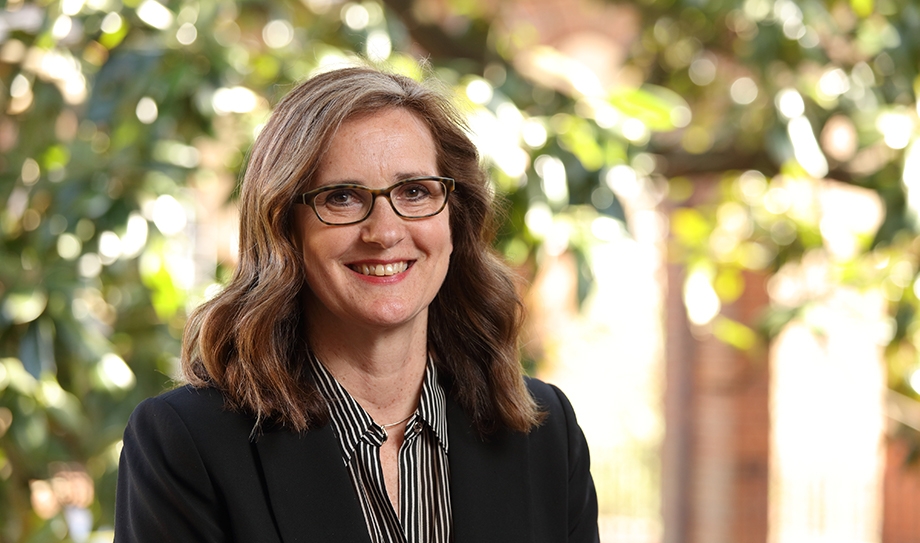If Bacteria Jitterbug, to What Song do They Dance?
Exploring the Potential of Mapping Data to Sound
University of Virginia professor of chemical engineering ROSEANNE M. FORD is set to test an idea she’s been casually mulling for more than a decade: setting the dance of bacteria to music.
The notion came from an image in a textbook. The movement of bacteria under a microscope, plotted on paper with data points, took the shape of a ballerina. The “dancer” stuck with Ford until it eventually led to a collaboration with MAXWELL TFIRN, director of composition and creative studies at Christopher Newport University in Newport News, Virginia. Tfirn has master’s and Ph.D. degrees in composition and computer technology from UVA.
Ford and Tfirn have received a National Science Foundation Early-Concept Grants for Exploratory Research (EAGER) award to fund “Exploring beyond visualization: Data sonification of bacterial chemotaxis patterns.” The EAGER program is designed for untested but potentially transformative research approaches. Ford and Tfirn’s project proposes to use sound as an alternate way to analyze scientific data. They plan to use Ford’s lab experiments to demonstrate the concept of sonification, the process of mapping information to sound to detect recognizable patterns.

Bacterial chemotaxis is the movement of a population of cells toward or away from a chemical stimulus. The phenomenon can be harnessed for applications that benefit humans, such as removing pollutants from the environment. Bacteria swimming behavior is observable under a microscope, but making sense of it visually is difficult. The human auditory system is actually pretty good at recognizing patterns. We may be able to hear what our eyes cannot see.
“We took video of bacteria when there was no chemical stimulus, no food source, around, and then a video when they were in the presence of a food source. Max used an algorithm to convert images from the videos into sound, so you can hear it in real time,” Ford said.
The result isn’t what we normally think of as music; it’s more a series of rapid, high-pitched tones that vary in number density, each representing a change in direction of bacterial movement. In Ford and Tfirn’s test, when a stimulus was present, the sound density decreased just enough to perceive a difference between the test and control samples. Ford suspects they are hearing the bacteria making longer “runs” toward the food source between direction changes — much like a dog on a scent, she said. In the control, the movement is random, with a greater number of direction changes.
The technique holds promise for providing researchers immediately interpretable data. More importantly, Ford and Tfirn hope to demonstrate that sonification could transform data analysis in the same way that visualization techniques have improved how researchers see, assimilate and communicate their findings over the past several decades.
Using sound in science or data in music isn’t new. Think of a Geiger counter for radiation, a case in which there is no other way to see what you’re measuring. Some radio astronomers, working in a field long known for producing incredible images from data, have also begun using sonification to gain additional insight into their observations. And, in 2014, physicists and engineers at the EUROPEAN ORGANIZATION FOR NUCLEAR RESEARCH, known by its French abbreviation as CERN, famously composed and performed “LHCHAMBER MUSIC” based on data recorded by the Large Hadron Collider.
But sonification is still largely unexplored as a data analysis tool, particularly in biological applications, Ford said. That’s what drew Tfirn to the project.
The genesis of his partnership with Ford was a guest lecture she gave in one of his graduate courses at UVA. He took a mathematical equation she had used to describe the trajectory of chemotaxis and converted it into audible signals. As a musician and composer, he often uses data in his work — as composers have done since at least since the 1940s, he said. Now he wants to flip the relationship.
“I have always wanted to work with scientists, and this gave me the opportunity to do it in a way that I can contribute something. I want this research to be about the science and to show how musical processes can be used in disciplines other than music,” Tfirn said. “This idea of representing data in sound seems to finally have broken out of music and caught the interest of the science world. Hopefully, it will continue to develop and allow musicians to engage in interesting science research and come up with clever ways of looking at the results.”
“That’s what has me so wound up about this project,” Ford said. “Let’s think about how we can sonify data to understand, for example, certain aspects of biological systems. We’re doing this to encourage the broader research community to consider mapping data to sound rather than, or in addition to, a visual image, and discover what we can learn from it.”